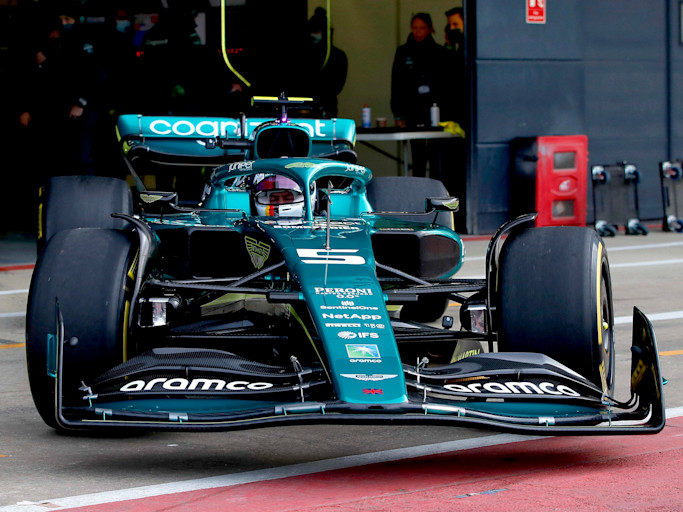
With reams of data and insight to come in pre-season testing next week, we're bringing you the lowdown into the six key areas of Formula One's technical revolution.
The return of ground effect and resulting stiffer suspension means the 2022 Pirelli tyres will have to stand up to some serious forces across every lap of the season.
In tandem with Formula One and the FIA, Pirelli has conducted a thorough and intensive process to create the 18-inch tyres fitted to every car on the grid this year.
At first glance, you immediately notice the increased size, mandated to give Pirelli a more road-relevant design. But there's more to the new tyres than just aesthetics.
There's also been an overhaul in the construction to enable drivers to push harder for longer, with the intention of creating more sustained wheel-to-wheel racing.
AMR22: Tech insights
The new era of Formula One has arrived. Designed to produce better racing, and heralding the return of ground effect, the AMR22 represents F1's biggest design revolution in decades.

The journey to 18-inch tyres began long before the 2022 season. The new size made its debut in the feeder series, Formula 2, back in July 2020, albeit with significant differences due to F2 and F1's differing demands on tyre structure.
While the F1 teams and Pirelli have also worked together to simulate the 18-inch tyres through the 2021 campaign, there was a crucial element affecting the relevance of the tests: all the running was done on the last generation of cars.
"The biggest factor in tyre performance is going to be the downforce on the car and the way the downforce is delivered," explains Andrew Green, Aston Martin Aramco Cognizant Formula One™ Team Chief Technical Officer.
"That's going to be the biggest challenge for the tyres. Ground effect is a completely different method of generating downforce.
"It's not something that the teams or Pirelli could test comprehensively with the previous generation of cars.
"At no time were the tests run with a 2022-spec car. So, it's going to be interesting and there are going to be challenges."
Sights and sounds of an F1 2022 car
Turn up the volume and immerse yourself in the sights and sounds of a new F1 era, as the Aston Martin Aramco Cognizant Formula One™ Team AMR22 hits the track at Silverstone.

There has also been technical overhaul in areas that complement tyre performance, most apparent through larger brake ducts, as well as new wheel covers that sit above the tyre compound.
"The wheel covers are there to prevent the flow of air through the wheel rims. Teams were blowing a lot of air through the wheel rims to move the wheel wake outboard and out of the way," says Andrew.
"That was a key philosophy change from F1, as previously it really was hurting the following car. So, that was a relatively simple change to encourage the desired effect.
"It does pose some challenges with the brake cooling, now there's no air flow through to the wheel. But that’s just another design challenge that we've hopefully solved."
But, while there are new challenges for the team to rise to, the goal of being kind to the tyres remains.
"The tyre changes haven’t really changed our philosophy," says Andrew. "We still want a car to be kind to the tyres, probably even more so in 2022, with the way that the downforce is delivered on the car and especially with a lot of high-speed downforce.
"Trying to be sympathetic to the tyres in those conditions is becoming even more important than before."
Access I / AM to get closer to the team.
































